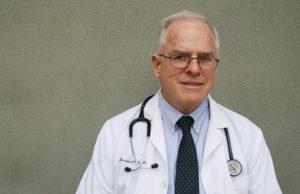

Medical students are a lot of fun. For one thing, they really want to learn. So I just returned from one of my favorite annual activities – 4 days spent in Pomona, working with second year osteopathic medical students. My job was to supervise and direct their enthusiasm, idealism, and energy, as they tried to learn some of the intricacies of cranial treatment. I also tried to unobtrusively probe their commitment to Christian values.
Every day I had eight students, and at the conclusion of my session I would ask if any were practicing Catholics. Score: 0 for 32. Oh, there were a few who admitted to being kinda sorta Catholic, but no one stepped up to the plate, so to speak. Now if one asks about Christians, a number of students will tell you they are, and clearly indicate participation in a faith community. So at least good for them.
Pro-choice or Pro-life?
It’s probably a safe bet that most of the students identifying at least as Christian would tell you they are pro-life. And even though there are pro-choice organizations at most if not all medical schools, I don’t think it’s difficult to find medical students of various faiths who are quite opposed to abortion.
But what is a rarity, are students – and faculty – who clearly understand that abortion subsists within the entire context of the culture of death, not as an isolated societal affliction. Particularly this means abortion’s intimately close connection with, and dependence on contraception.
Why? Because it just seems counterintuitive that contraception actually drives abortion. Shouldn’t good contraception markedly lessen the demand for it? That’s certainly what I thought, and it blew right over me in 1973 that in spite of 13 years of really excellent contraceptive technology, abortion was what? Lessened? Diminished? No. Of all things, it was demanded and legalized.
When something gets legalized, especially on such flimsy, creative legal basis as abortion was then, it has to be wildly popular. You can get mad at the Supreme Court judges but in legalizing abortion, they were only responding to a mounting demand that was becoming irresistible. Indeed, all that was required in some states prior to 1973 was for a woman to say her health was threatened by her pregnancy – her mental health – and *poof* there would be a psychiatrist to certify her need to kill her baby and an obstetrician to do it.
By now, there are some 1.2 million abortions a year – with major encouragement from Catholics. And abortion providers are happy to see clients get contraception because no method is 100 percent effective. The few pregnancies that manage to slip through will turn to their contraceptive provider for abortions. Then there are those who did not use contraceptives, and now find themselves pregnant. Do they accept the consequences? Perhaps not, and often they are just as swept up in the drive for abortion as their contracepting sisters who meticulously – or not – took the pill but somehow got pregnant anyway. What a bonanza.
So how does anyone get the contraception – abortion connection, let alone medical students?
The contraception – abortion connection: is anyone convinced?
Convincing is hard. But in addition to what you might be able to say, there’s a lot of reading material out there, including Humanae Vitae and other Magisterial documents. There are books, including Mary Eberstatdt’s excellent “Adam and Eve after the Pill” – only 161 pages. But realistically, medical students already have a hard time just keeping up with their reading assignments.
There is Janet Smith, PhD’s CD, “Contraception, Why Not?” It takes 78 minutes but you can drive somewhere and listen – might work – try it.
I try to hand out Janet’s CD to anyone I think might take it seriously. You could do the same. Ordered in bulk at https://shop.mycatholicfaith.org and you can get 100 for $1.25 each.
There’s another way. See if you can get your health professions student to visit https://cathmed.org/students/. The Catholic Medical Association has some nice benefits for student members, and is the largest group of Catholic health care givers in America – try offering the $45 annual student membership.
The CMA follows the Magisterium strictly, and wants to reach those who are just now training to be your health care providers. So in addition to teaching the abortion – contraception connection, you have a good reason personally, to support and even recruit for this organization. Benedicamus Domino.






